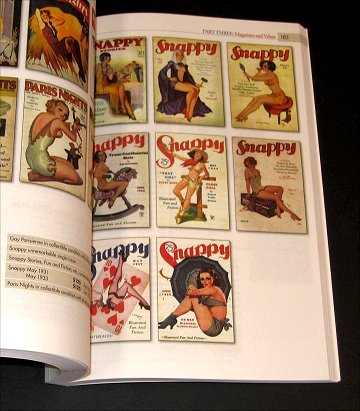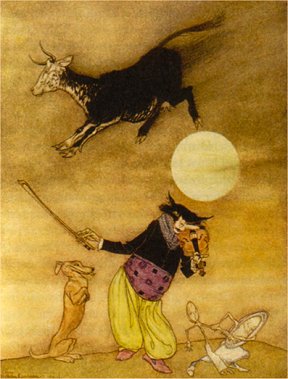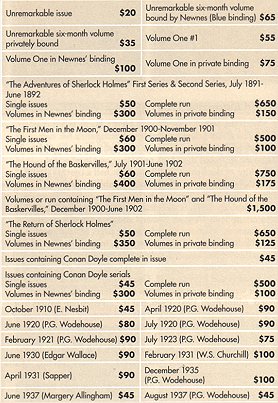

|
<<< Continued from previous page The long answer begins with the first 83 pages of this book. When I was getting started in bookselling and, also, beginning to buy price guides, this is precisely the sort of thing I was lusting for: a good, long list of collectible authors and illustrators richly annotated with specific things to look for and where - in short, a cache of major flashpoints, MANY OF WHICH APPLY TO BOOKS AS WELL. Look at this entry on page 36:
If you think that Arthur Rackham isn't a major flashpoint, a very short search session on eBay will disabuse you of this. In all, there are 100 of these entries in this guide (divided into 50 'stars' and 50 'sleepers'), and each and every one of them points you directly to items of value. When I think about how much time and effort - and money - I spent putting together my own list of magazine flashpoints, the first thought that comes to mind is, "Where the hell were you guys when I needed you?" The good news is that, if you're needing to get up to speed, you don't have to do the work I did. Here's the right stuff, served up fresh on a platter for a few bucks. This guide doesn't end at page 83. The remaining 221 pages of Vintage Magazines, which takes up the task of illuminating 133 different collectible magazines, resembles (in formatting) many of the guides I have with several important differences. First and foremost, illustrations. They're everywhere, and everywhere in color. This page, for example, isn't the exception:

It's actually more typical than not. In all, there are a whopping 1100 illustrations, and we all know how much it helps to find something in the field if we know going in what it looks like. Illustrations also help us to understand instantly why, say, a particular illustrator is so appealing to collectors:

Also - and no less important - there's considerable textual content accompanying the illustrations that focuses heavily on why certain (or in some cases) all issues of a given magazine are collectible. A short article on Strand Magazine hits me close to home. Here's an excerpt which points to one of my favorites, P.G. Wodehouse: Newnes and his editor, H. Greenhough Smith, actively sought popular writers, shying away from the "literary." As Reginald Pound, editor from 1941-1946, put it: "...Pedestrian writers in a non-derogatory sense. Their feet planted squarely upon common ground...they remained content with the surer profits to be earned toiling on the lower slopes." Those "lower slopes" produced Arthur Conan Doyle's Sherlock Holmes and, with him, the popular acceptance of the modern mystery genre. Rudyard Kipling, Agatha Christie, W. Somerset Maugham, H.G. Wells, Anthony Hope, O. Henry, Dorothy L. Sayers, Aldous Huxley, Arnold Bennett, Grahame Greene, P.G. Wodehouse, H.C. McNeile (Sapper), Arthur Morrison and numerous other popular authors were published in The Strand, and several were introduced by it. Best of all, following these articles are lists of high spots - specific, dated issues (sometimes runs) often accompanied by the very flashpoints that point to value. In this case, there are 7 issues identified as containing Wodehouse stories. Whether I'm a Wodehouse collector or a dealer, this is valuable information:

It's difficult to find anything not to like about this guide, but for the sake of editorial objectivity, I'll make a few token observations:
Okay, enough nitpicking. It's time to get to my recommendation:
Fellow booksellers, I don't say this often, but this is must have. You should not only buy
this guide, you should read it from cover to cover. You should not only read it from cover to cover,
you should study it. You should not only study it, you should memorize it. Do this,
and you'll soon be furlongs ahead of over 99% of your fellow booksellers.
No exaggeration - this is one of the best guides I've come across in recent years. Buy it now.
Buy it here:
< to previous article
to next article >
Questions or comments?
| Forum
| Store
| Publications
| BookLinks
| BookSearch
| BookTopics
| Archives
| Advertise
| AboutUs
| ContactUs
| Search Site
| Site Map
| Google Site Map
Store - Specials
| BookHunt
| BookShelf
| Gold Edition & BookThink's Quarterly Market Report
| DomainsForSale
| BookThinker newsletter - free
Copyright 2003-2011 by BookThink LLC
|

|